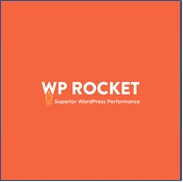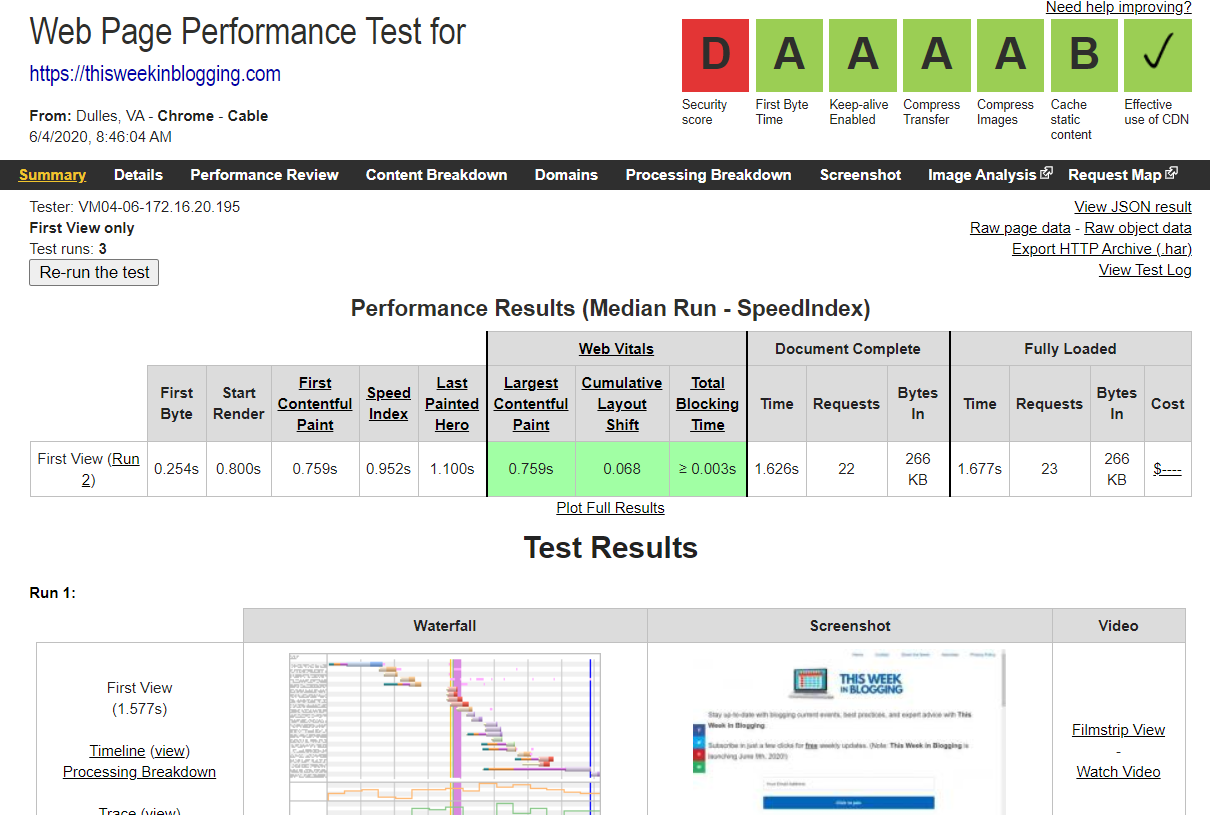Published by Jeremy. Last Updated on June 19, 2024.
Disclaimer: This Week in Blogging uses demographic data, email opt-ins, and affiliate links to operate this site. Please review our Terms and Conditions and Privacy Policy.
Whether we like it or not, third-party cookies on Google products will be leaving us shortly (although the “when” element of this question remains to be seen- first it was 2023, now it appears to be at least 2024).
With this comes a lot of uncertainty about just what happens after that, as third-party cookies are used for so many things. For bloggers, one of the biggest uses of third-party cookies revolves around all things ad revenue, as these cookies are used for targeted advertising on our sites based on user's search history. The better the targeting, the higher ad rates you have historically achieved (and we're talking serious money here- my single best day was $83.90 RPM).
The shift to first-party data will change a lot of this, and ad services, like Google's exchange, are testing a variety of new targeting methods to help deliver ads to users while keeping their privacy in mind.
Naturally, this will impact earnings. Google tests have shown that there could be a collapse in ad revenues upwards of 60%, while others, like Mediavine, counter that first-party cookies will only impact Chrome traffic (as other browsers have already phased out 3rd party cookies) and that Chrome accounts for roughly 63% of market browser share outright (although it is 35-50% on our sites). So that 60% drop may be more like 20% to 40% for most of us once the dust settles.
The good news is that these figures are all based on cookies disappearing and no other solutions coming about. Ad networks, like Mediavine, are working hard on first-party solutions to help protect member revenue (and even improve it!) after the switch. The bad news is that the same may not be able to be said for those on other ad networks, as it will likely take time for everyone to settle on what is the “best” solution.
In this one, we wanted to mostly ignore what ad networks are doing for a minute and instead focus on what you can do as a blogger to be prepared for the first-party cookie switch. The solution to this revenue problem is on us as much as on our ad networks!
Enable First-Party Opt-Ins Via Your Ad Network (if Available)
First off, we should talk about what a first-party future means outright. Ultimately, it is about putting data controls back in the hands of the user for privacy.
In the third-party cookie system, your location data and computer history are more or less available to all without an opt-in. That is to say, if you visit Sites A, B, and C all about buying a car, an ad network can see cookie data from those sites when you are browsing Site D and serve you ads relevant to these topics (i.e. buying a car). Geographical targeting also comes into play as they may see you're in a certain city, and, in the same example, you may see ads from specific dealers near you as well.
Simply put, the third-party system allows for a lot of your data to be utilized behind the scenes and without your knowledge. We, as bloggers, typically do not see this data personally (I've never seen browsing data like this on any reader, ever) as it is parsed via algorithms on the ad exchange's side for getting the best-matched ad for each and every user.
First-party data will operate a little differently. Instead of Site D's ad exchange already seeing your cookies, you will essentially have to opt-in to sharing that data with them. The mechanisms for how all of this will function are still being worked out, but the general consensus is that there will be an opt-in mechanism where you can control what data is shared with each and every site you visit on the internet.
Yes, expect a lot of pop-ups. Yes, it'll probably make today's EU popups look cute by comparison. Yes, we hope we're wrong.
But where bloggers can benefit from this is that many ad exchanges are developing tools for a single opt-in to work across all member sites (assuming privacy laws will allow this in the future, of course). On Mediavine, for example, logged-in users who agree to share data will do so on all member sites they are logged into- not just the one they signed up on. So the community effectively works together to improve opt-in rates for each other universally.
So the first thing you can do is simply this: look into what first-party opt-ins your ad network may provide and enable them. The more users who opt into this data sharing before the switch means a larger percentage of readers sharing data on day one, which (hopefully) means greater RPMs for when they land on your site once third-party cookies go away.
- Note: Opt-ins should, theoretically, already help increase earnings on Firefox and Safari as third party cookies are already gone, too. No matter what ultimately happens, the more reader consents you receive now, the better off you'll be!
Increase Ad Views Overall (Traffic, Ads Served, Etc.)
For those who want to continue making a decent income from ads, the easiest way to shield yourself from a 20-60% reduction in earnings is simply to increase your traffic proportionally to whatever the earnings drop may be.
No, we're not kidding! This may sound trivial, but this needs to be said.
If you are relying on a certain floor of income from advertising within your business, say, $50,000/year, and you think you may lose 50% of revenue when third-party cookies die, then your push right now should be to do whatever it takes to get to $100,000/year in revenue. If you think you will lose 25% of revenue, you need to increase your earnings to $67,000/year, if you think you will lose 40% of revenue, work to increase earnings to $83,300/year, etc.
If you successfully increase your income and ad rates drop as predicted, you'll, hopefully, still be hitting your original target of $50,000/year and be no worse for wear. It'll be painful to watch, but at least you'll keep your floor intact. If ad rates drop less than that, improve, or if it takes longer for first-party cookies to be rolled out (as Google has already delayed this a fair bit), you will be pocketing more money which is always our ultimate goal in owning a business.
While this may be easier said than done, there are several pushes you can be making now to help increase your revenue outright. These include the following:
- Increase your ad density settings on existing content. More ads displayed = more money.
- Edit popular articles to make them longer and therefore display more ads. More ads displayed = more money.
- Write content targeted for SEO (via search volume) or social media (via viral potential). More pageviews = more ads seen = more money.
- Market content to those in the USA as it is home to the highest ad rates on average. More US readers = more income potential.
- Build a following on social media and via your newsletter. More traffic sources = more potential traffic = more money.
While simply increasing ad density settings is an easy change for some, several of the above points require getting more traffic (or better traffic) outright, and this is often done via new content. This goes back to one of the biggest struggles bloggers have when it comes to growing, and that is simply about writing quality content people want to read outright as, noted above, ad income is a volume game to a degree.
To put it bluntly, if you are only writing 300-word articles (read: low ad count) that are targeted to a hyper-niche audience that may only get 50 views a month, your annual ad revenue potential in today's 3rd party cookie world may be $2.00-$20.00/article/year- if that. While these short posts may be necessary for some to showcase your expertise in a niche, or perhaps be gems from an affiliate standpoint, from an ad revenue perspective, they're likely doing very little for your business in the long run.
If you are making $50,000/year on ads, you now have to cover the difference in the form of new articles. Mathematically, this would mean you must produce 2,500 to 25,000 new articles if everything else remains the same. In other words, it will be really hard to make up for the difference in the form of new content.
Shifting your content to include larger articles that you can rank well or trigger a viral on social media, on the other hand, will do wonders for your revenue potential if done effectively. Regularly publishing 2,500+ word articles with a traffic potential of 1,000+ views a month may skyrocket your income potential to $60-$600/article/year or more, before any income drops from the switch to first-party cookies.
If you are making $50,000/year on ads and need to cover the difference, this means you only need to publish 100-1,000 new articles! Suffice it to say, one of these cases is doable, and the other most certainly is not. But if you want to get a leg up on creating content before any potential revenue drop, you must start the work now to get the most return later.
- Note: If you are already making $50,000/year on ads, odds are good this means you're in a premium ad network beyond AdSense either be it Ezoic, Monumetric, Mediavine, Raptive, or others. As such, the higher article counts illustrated above are very unlikely (these figures were based on our AdSense earnings as a starting point). As such, for those on a premium ad network, that high-end count would likely drop by a minimum of 66%- or upwards of 8,250 and 333 articles in the respective cases. Thankfully, any other ad setting changes (e.g. increasing ad density) may reduce how many new articles you need to produce from there as well as these all work together!
Join a Larger Ad Network
In the previous section, we discussed things you can do on-site to help increase your revenue potential, but there are some things you can do that may help you outside of producing content as well.
On the ad income front, depending on your traffic levels, you may want to look into joining a larger private advertising network- especially if your site is on the smaller end of the spectrum and you qualify for the switch (or will qualify, given a certain level of growth via creating new content).
The simple reason for this is that all ad networks pay out differently. Some have higher commission splits in favor of the publisher. Others tap into more exchanges beyond Google's for competition. Some may even have private advertisers only using their brand's services outright. Suffice it to say, one site may earn a set monthly income on one ad network and almost immediately jump 2x, 3x, or even 5x when switching over to a premium publisher. (Hence why the article count in the previous example varied so much above!)
When I switched my wine blog from AdSense to Monumetric (in 2022), for example, I saw an immediate earnings shift and started making about 4x more overnight. It went from $1/day to $4/day, mind you, but it was still 4x. When I switched my older sites from AdSense to Mediavine (in 2017), the switch was even more dramatic at 10-30x depending on the month/season (note: this rate has been adjusted to reflect 2022 earnings, not 2017's- that was more like 5-10x). Other ad networks, like Raptive, have similar increases for those who can meet their traffic threshold to join, too.
So for those with smaller sites, reaching a milestone where you can join the next biggest advertising network may do wonders for your income potential, and, subsequently, offset potential drops when cookies change! (Read private ad network entry requirements plus commentary on some of our favorites here.)
But things get even better from there.
Some ad networks even reward you with higher revenue splits based on how long you've been a member. Some even give bonuses based on reaching set income or ad view targets, too.
We may be biased for Mediavine here, but they are one of the best for this. Revenue splits start at 75% for new members, and each year you are given an extra 1% commission split for a loyalty bonus (up to 80%). Join the network, wait, and make (nominally) more money!
They also have Pro and Premiere programs for higher-income sites for even more revenue splits. Pro, for example, has a starting 85% revenue share for those who make $100k in ad income on a rolling 12-month basis. So if you were making 80% with your loyalty bonuses and suddenly jump to 85% once you hit $100k, you are given an extra $6,250 over the next 12-month period if you maintain that $100k base earnings (if you made $100k in your first year and go from 76% to 85%, that is an $11k jump!). Even better? Pro lets you get second sites on at a lower traffic threshold (25k monthly sessions) to help further increase your revenue via additional sites as well.
- This is my plan to pad my ad income. My local blog is sitting around $80k/year in earnings, and my wine blog is about 2/3 of the way to being able to join Mediavine at that second site threshold. If I can increase the traffic on both of these sites to reach their respective thresholds ($100k/year ad income and 25,000 sessions), the increase in ad earnings from traffic, increased commission split, and 2nd site addition on Mediavine will boost my overall income by about $40,000/year from where it is now. This would be huge!
- It is worth noting that maintaining a $100k floor is another risk for those in programs like Mediavine's Pro in the event of ad rates dropping, too.
So not only should bloggers be looking at increasing their income potential via on-site changes, some may be able to look at changing advertising networks to get some serious RPM uplifts as well. Every little bit will add up in case the worst happens!
Diversify Income Streams
Finally, we need to look away from advertising as there are simply far more ways for bloggers to make money online beyond ads. Putting all your eggs in one basket is never a good idea, and this is especially true with ad revenue- although most of us do it anyway. If that rumored 60% drop becomes 90%+, say goodbye to many of your favorite blogs as that would be a cataclysmic failure within the industry (thankfully, we don't expect this to happen).
So, what can you do to create a hedge against only relying on ads? There are several ideas you may want to consider:
- Create a product like a course, ebook, or tangible good within your niche.
- Get into monetized programs on social media like Facebook's Creator Program.
- Start freelancing with 3rd parties to get paid for your writing.
- Consider offering premium content behind a paywall or via services like Patreon.
- Join affiliate networks and make money off products you are already recommending.
- …and so much more!
Applying numbers to these is, unfortunately, rather difficult in this context. There is no easy formula for calculating earnings potential for any of the above, especially at scale, so we simply want to leave this one with a generic reminder that all of these (and more) exist outright. Bloggers who want to diversify their income can and should be looking at all of the above, even without the shift to first-party cookies!
When it comes down to it, the future for ad revenue is going to be a rocky one once third-party cookies meet their inevitable demise. We are hopeful that ad rates will go up for those who utilize first-party solutions the best, but we also have to admit that in a self-contained ecosystem like digital advertising, if earnings go up for some, that means it is very likely going down for others at the same time.
As such, no matter what happens, we as bloggers need to think of what we can do now to get ahead of the changes that may come in the future. If you make the push and double your income now and the cookie change results in a 50% drop, you will have beat the spread and come out no worse for wear. If you make the push to double your income and the drop ended up being not as bad (or, conversely, actually increases your revenue), I don't think anyone would be complaining!
Whether you do this by showing more ads, writing more content people want to read, joining a premium ad network, or diversifying into non-ad-based income streams is simply up to you. The sky is truly the limit regarding earning money online, and we all need to push as hard as possible to make it happen while we have the time!
Join This Week in Blogging Today
Join This Week in Blogging to receive our newsletter with blogging news, expert tips and advice, product reviews, giveaways, and more. New editions each Tuesday!
Can't wait til Tuesday? Check out our Latest Edition here!
Upgrade Your Blog to Improve Performance
Check out more of our favorite blogging products and services we use to run our sites at the previous link!
How to Build a Better Blog
Looking for advice on how to improve your blog? We've got a number of articles around site optimization, SEO, and more that you may find valuable. Check out some of the following!












